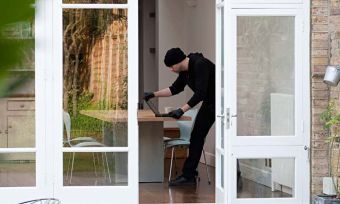Moving house is an exhilarating new adventure. Or at least, it should be, provided your valuable treasures survive the move intact to shine once again in their new environment.
Broken, crushed or damaged items are definitely not what you want to unpack at the other end of a move. To guard against this happening, it’s important to get the packing right in the first place. And that requires pre-planning, and lots of it. Not allowing the time it takes to organise a task as big as moving house puts you at risk of taking last-minute packing shortcuts and making hurried decisions on the fly that may come back to haunt you.
Armed with pen and paper (or electronic file), make an inventory of the most vulnerable items to move in each room of your house. These are likely to include:
Glassware & China
Whether antique, valuable, sentimental or just plain useful, they are the most commonly damaged items in any move. It doesn’t take much to damage glassware or china but it may cost a lot to replace, especially if it’s rare.
TIP. Get the right box for the job (strong, not very large and not carrying more than 4kg). Wrap individual items separately for protection. Ideally they should not come into contact with other items. Give each object lots of padding and layering. When packing oddly shaped items like jugs, vases or other unusual dishes, be sure to protect any handles by wrapping packing paper around them. Wrap the rest of the item in a double layer of paper. Wrap cups individually and protect the handles with an extra layer of paper. Place them upside-down in the box.
Lamps & Décor Pieces
Table and floor lamps and other similar décor pieces make the world of difference to the look and function of a room. And the right ones are not easy to find, let alone replace, if damaged in transit.
TIP. When packing lamps, disassemble the lamp and pack the base and the shade separately.
For the shade, use a sturdy box that’s at least two inches larger than the shade and line it with paper. Fill the box with a large amount of crumpled packing paper to pad the shade and prevent it from moving around. Don’t be tempted to pack other items with the shade! When packing the lamp base, wrap it carefully with paper pads and place it upright in a carton with crumpled packing paper
Mirrors & Glass Table Tops
It goes without saying that mirrors and anything made from glass can be easily damaged. Mirrors come in all shapes and sizes and a large feature mirror, for example, can be awkward in shape and size and, if not packed correctly, dangerous to human handlers. Many homes, too, have glass-topped dining and side tables which require careful dismantling before packing.
TIP. Depending on the quantity of mirrors and glass you’re dealing with, you may well want to consult a professional who can help you pack these correctly. If you choose to pack these things yourself, consider using a carton that is specifically designed for mirrors. Wrap the mirror in paper, place it in the carton and wrap the carton with tape in multiple directions to keep it secure.
Artworks
No matter whether you have priceless, one-of-a-kind art, or one of those inspirational posters you can’t live without, you want to make sure it arrives at your new home unharmed and in one piece. After all, art doesn’t look nearly as good with a hole in the canvas or a broken frame. Packing artwork and paintings for a move has its own unique set of problems, over and above “normal” packing. Art is usually unwieldy – large, but flimsy – and the elements meant to protect it (the frame and glass) can, often as not, end up damaging your art during a move.
TIP. Be mindful that packing materials can etch glass or leave stains on canvas. Newspaper is a great example. Even if it doesn’t get wet, the ink can still rub off. Similarly, parchment paper has been known to pit/scratch/etch glass, so it’s best to avoid using it. Using white foam filler-type packing (normally found in boxes of electronics) is not great for artwork. It can break up and wedge into the tiny spaces between the glass of your artwork and the frame. If your artwork is loose, simply roll it up loosely and place it inside a cardboard tube. For very delicate or antique frames consider having them professionally crated through an art gallery for a small fee. It is absolutely worth the extra time, effort and money to have some artwork and frames professionally packed.
Electronics
We know how much we all love our TVs, computers and other electronics – so how crushed would we be if they arrived at the new house … well, crushed??? With a little extra care, all will be well.
TIP. Electronic items require a special carton. It is best to repack these in their original boxes if you still have them. If you don’t have the original packaging, ask your moving service to provide special cartons. When you are packing your TV, use a thin foam wrap to protect the screen and always pack it upright. Never lay your TV flat in a box.
Wine
More people than you imagine are avid collectors of bottled wine. From Grange Hermitage to The Antipodean, some wines greatly increase in value as they age – providing you don’t drink them first, that is. But wine is an investment that can easily be lost if mishandled during a move. Proper preparation and packing can minimise the risk of damage and spoilage.
TIP. If you plan to do the packing yourself, there are specialised wine cases and purpose-designed glassware boxes available so search them out for your beloved collection. Remember that some red vintages should be placed on their sides or upside down in the packing container to keep corks wet and sediment undisturbed. Even if you use extreme care in packing your wine, bottle shock may occur from the wine shaking within the bottle as it is moved. If opened too soon, a loss of flavor may result. To prevent this, be sure to allow the bottles to rest at your destination at least seven days for every day your shipment is in transit.
Sporting Equipment
This may hold its own in play, but it’s no match for a rough house move. People don’t think of sporting equipment as needing the protection of something like glassware or artwork, but it’s sometimes just as sensitive and can be expensive to replace.
TIP. Breakages are nearly always due to equipment poorly packed or totally unprotected. If you kept the original packing materials intact, they may offer you a customised starting place for protection. Check the manuals for oversized or extra sensitive equipment to see if there are special considerations or precautions you need to take when moving it. If you have any vulnerable sports gear needing to be moved, whether it’s golf clubs, tennis racquets or your bike, take extra care with how you pack, or have removalists take care of it for you.
House Plants
There is nothing better than having all of your favourite plants with you at your new place, but getting them there can be tricky and they’re at high risk of damage in transit.
TIP. Stop watering them a few days before your move to help make them lighter and less messy to transport, and if they’re in boxes, make sure they’ve got holes to breathe. Utilise ties or bags to separate plants from one another and protect loose branches that might be broken. The changing temperatures and lack of fresh air in a moving truck can be harmful to your plants. When preparing for a long-distance move, the safest, most certain way to transport houseplants is in a stable, temperature-controlled environment like the back seat of your car. If you are unable to make accommodations for your houseplants, consider taking cuttings to replant. You’ll want to wrap cuttings in wet moss and packing paper to pack in a plastic grocery bag. Place bags in a small box and fill gaps with crumpled newsprint.
Clearly label any boxes that contain the items above as ‘fragile’ (use the red and white ‘fragile’ tape) and ‘this way up’. Take your time packing and even consider keeping your fragile boxes separate from the rest of your belongings. Test boxes for movement before you actually move them. If they’re jostling about, add more padding.
Bonus Tip!
Only pack in the moving truck what you can afford to live without. If something is too close to your heart and must not break, carry it with you in the car to prevent accidental damage when they are bundled in with your other belongings in the moving truck. This could include packing and carrying your best wine glasses and any other fragile pieces.







Share this article